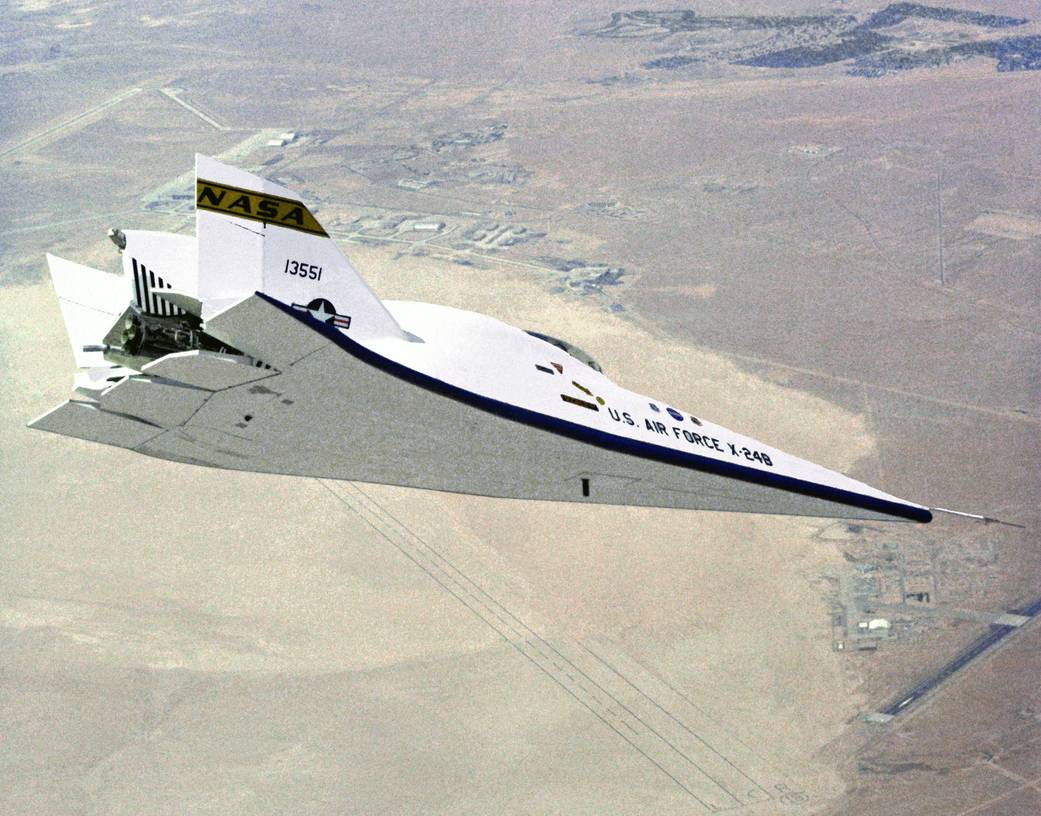The X-24B’s design evolved from a family of potential re-entry shapes proposed by the Air Force Flight Dynamics Laboratory, each with higher lift-to-drag ratios.
To reduce the costs of constructing a research vehicle, the Air Force returned the X-24A to Martin for modifications that converted its bulbous shape into one resembling a “flying flatiron” – a rounded top, flat bottom, and a double-delta planform that ended in a pointed nose.
Manke was first to fly the X-24B, a glide flight on Aug. 1, 1973. He was also the pilot on the first powered mission on Nov. 15, 1973.
Among the final flights with the X-24B were two precise landings on the main concrete runway at Edwards, which showed that accurate unpowered re-entry vehicle landings were operationally feasible. These missions, flown by Manke and Air Force Maj. Mike Love, represented the final milestone in a program that helped write the flight plan for today’s space shuttle landings…Learn more
The X-24B was transferred to the National Museum of the United States Air Force in Dayton, Ohio in November of 1976,


























